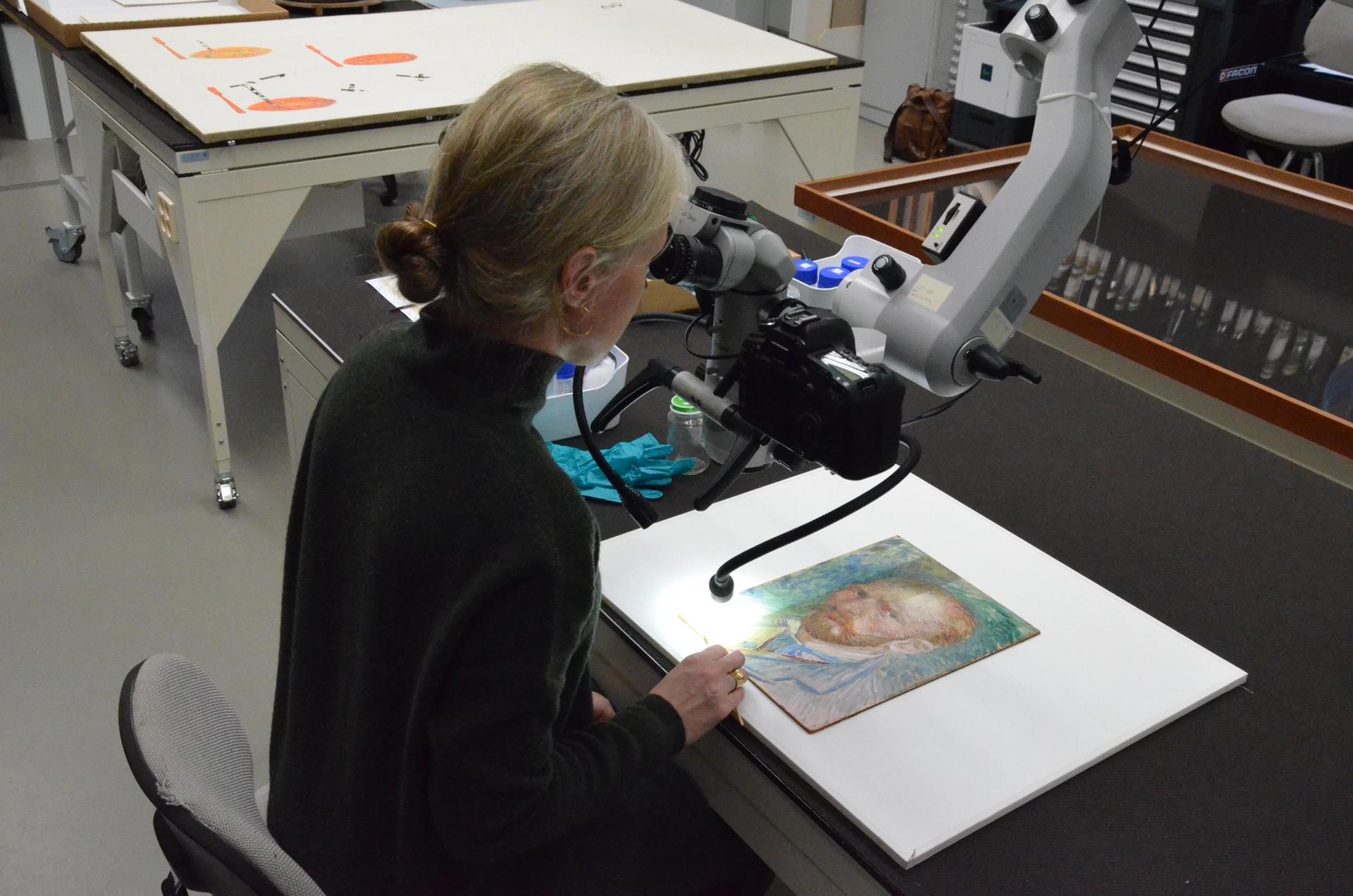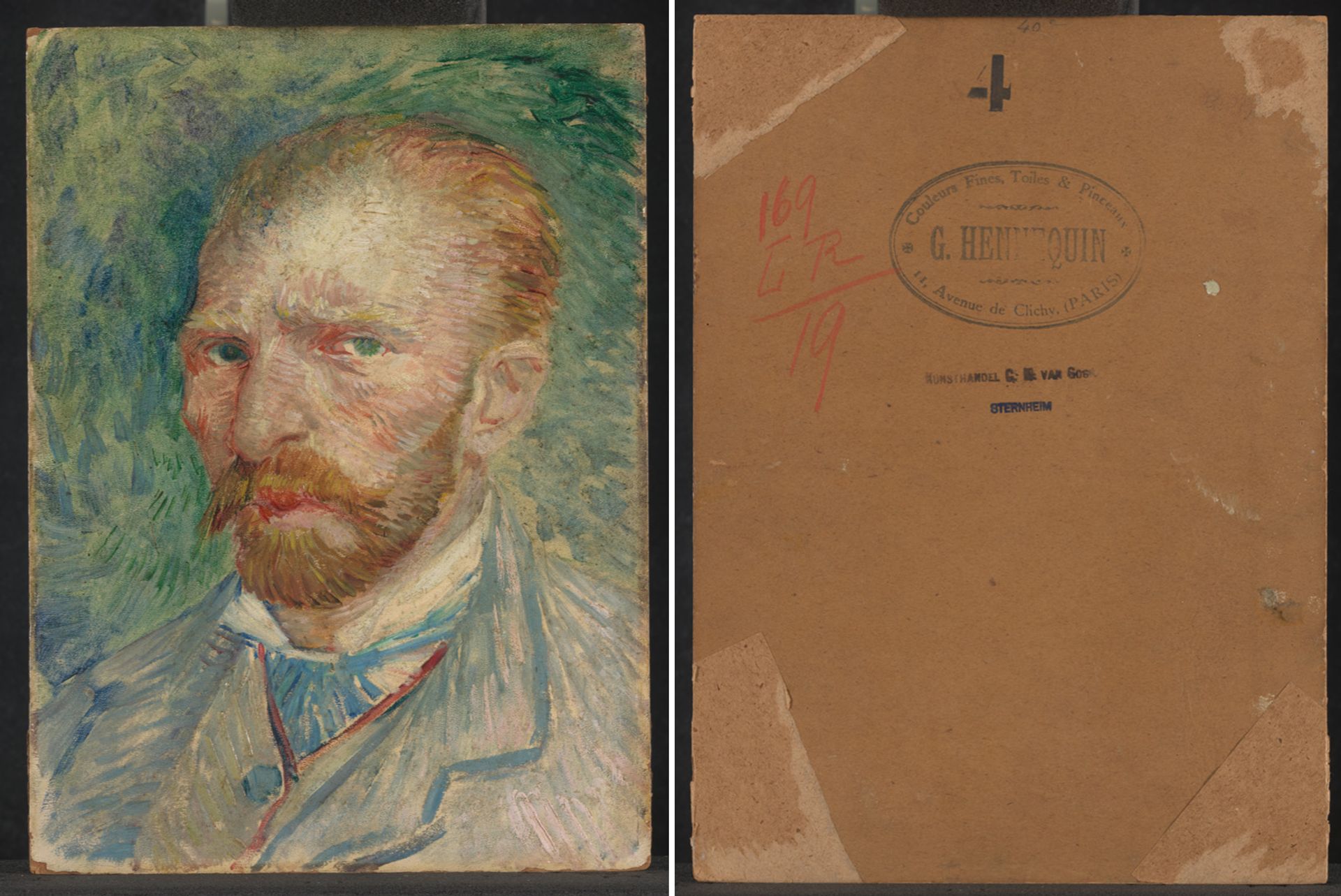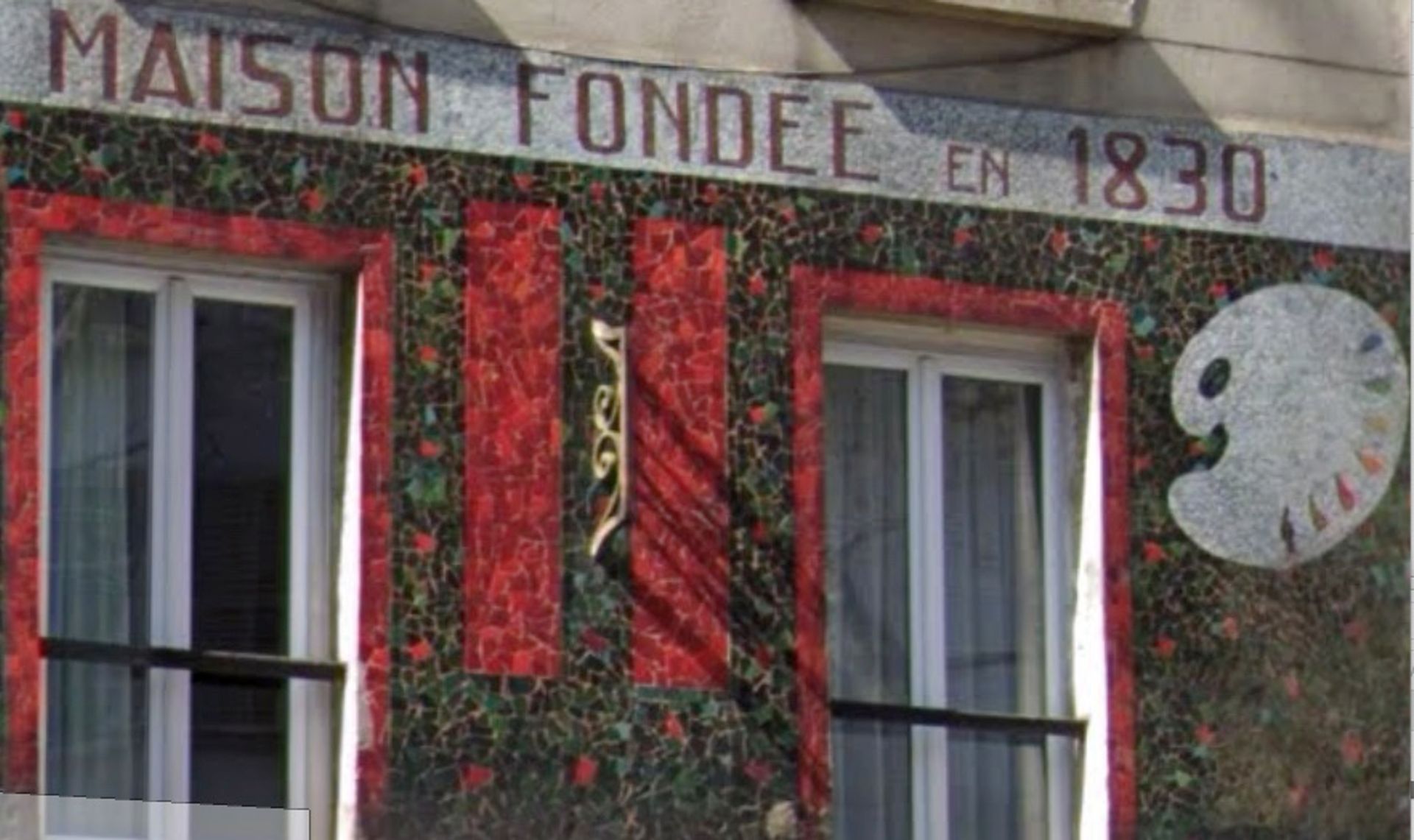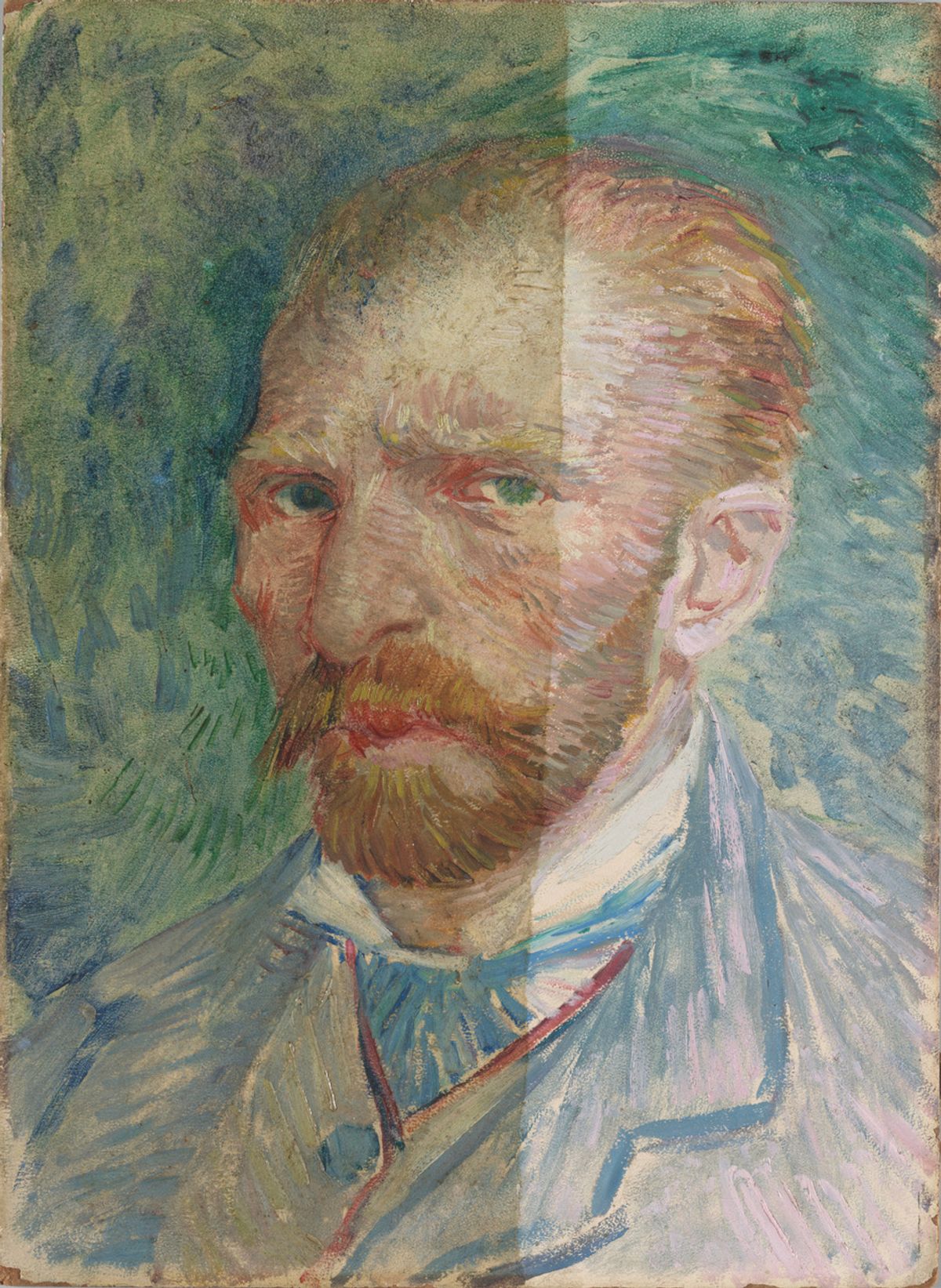The Courtauld Gallery is to open its long-awaited exhibition Van Gogh Self-Portraits next February. Among the requested works was a self-portrait at the Kröller-Müller Museum, which is located in a national park in the east of the Netherlands. The museum agreed to lend this key picture, but conservators felt that work should be done to make it safer for transport. It was also decided to clean the painting of discoloured varnish, so that it would be looking its best.
The Kröller-Müller self-portrait dates from April-June 1887, half way through Van Gogh’s stay in Paris, when his art was transformed. He abandoned the dark tones of his earlier Dutch paintings after he discovered the bright colours of the Impressionists.
In the self-portrait, Vincent’s calm expression is underlaid by a touch of sadness and anxiety in his eyes, one of which is in shadow. His smart attire—a jacket, waistcoat and cravatte—gives him the air of a successful gentleman rather than an avant-garde artist. Vincent appears older than his 34 years.
The self-portrait was among hundreds of paintings that passed after Vincent’s death to his brother Theo and soon afterwards to his sister-in-law, Jo Bonger. In 1909 she sold it to the German playwright and collector Carl Sternheim, who owned it for ten years. The painting was then bought by Helene Kröller-Müller, who opened her museum in 1938—and it has always been among its most popular Van Gogh works.

Kröller-Müller conservator Margje Leeuwestein working on the self-portrait, November 2021 Credit: Kröller-Müller Museum, Otterlo (Photo: Sabine te Lintelo)
The self-portrait was varnished in the mid-20th century and this coating eventually became yellowed and dirty, obscuring much of Van Gogh’s detail and deadening its full impact. A photograph of the work nearly half completed, in November, shows quite what a difference this makes.
Although most of Van Gogh’s paintings are on canvas, this was was done on cardboard. Hardly surprisingly, the edges of the board have become fragile, so earlier this year it was decided to mount the cardboard on a supportive backing.

Van Gogh’s Self-portrait, the unframed front and reverse before conservation work, March 2021 Credit: Kröller-Müller Museum, Otterlo (Photo: Rik Klein Gotink)
Obviously the painting and its materials were carefully studied before the work. The reverse of the original cardboard has the stamp of the artists’ supplier G. Hennequin, based at 11 Avenue de Clichy, at the bottom of Montmartre. This was just under ten minutes’ walk from the apartment which Vincent shared with his brother.

Facade of 11 Avenue de Clichy today, with the original mosaic frontage for G. Hennequin, artists’ supplier (the shop survived until just a few years ago)
Many of Van Gogh’s paintings have suffered colour changes, particularly with fading red pigments, due to light exposure. The Kröller-Müller self-portrait is no exception, and traces of the original stronger tones can be seen on the very edge of the board, where the image was protected by the framing.
The catalogue of the 1919 auction, when the painting was acquired by Mrs Kröller-Müller, describes the artist’s suit as “pale lilac”, whereas today it is a light blue, as a result of faded red. Margje Leeuwestein, the Kröller-Müller conservator, believes that the colours of both the background and jacket have changed considerably—and were once “warmer and more purple”. Fortunately the face and hair seem to have changed relatively little.
Karen Serres, the curator of the Courtauld exhibition (3 February 2022-8 May 2022), is delighted with the loan and the conservation work: “The removal of the discoloured varnish will allow us to see the painting closer to the way that Van Gogh created it.”




